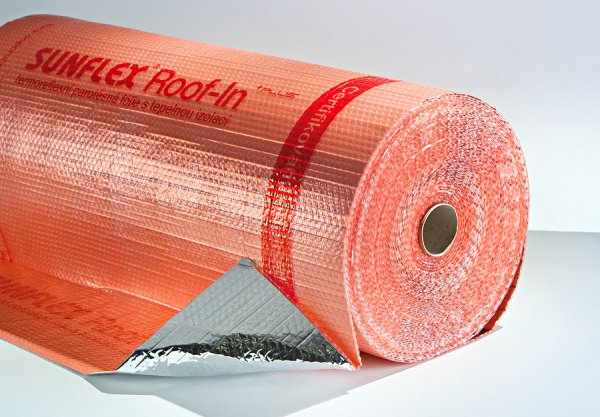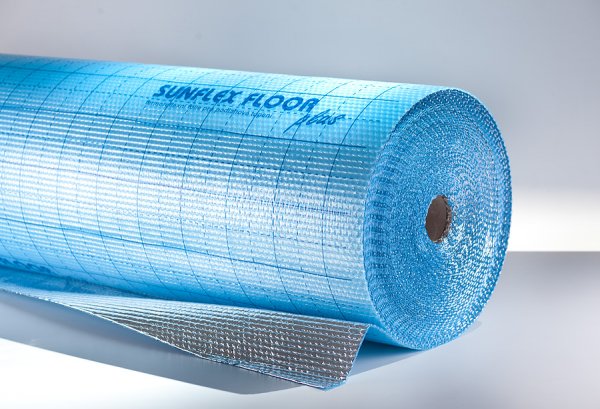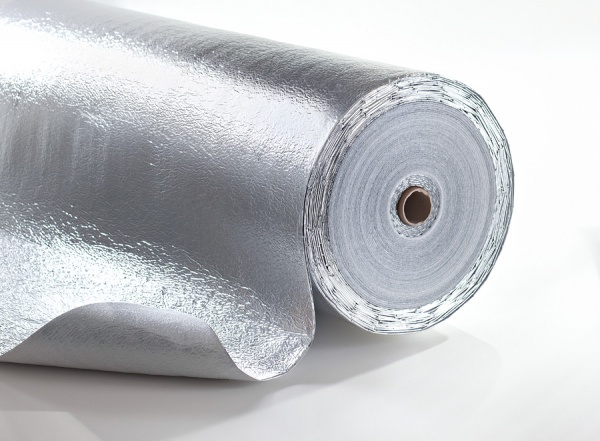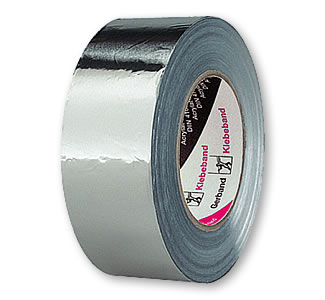
Sunflex Roof-in reflective foil
The foil is applied above plasterboard, lumber and mineral fibre ceilings, partition walls or skin walls. Application – for standard constructions and renovations, low-energy, passive and wooden houses.
When using Sunflex Roof-in in combination with infrared heating, the heating bill can be reduced by up to 20% and the room temperature increased by 2–4 °C. The investment pays back already during the first heating season.
Thanks to the velocity of infrared rays, which comes close to the speed of light, the infrared heat can penetrate common types of insulation, such as mineral wool, polystyrene or polyurethane. The only way to keep up to 95% of the heat in the heated space is to reflect it from a metallized layer on a reflective foil back into the room. With a reflective foil, significant heat losses can be prevented.
The SUNFLEX® Roof-In Plus foil combines the properties of thermal insulation, moisture stop (vapour-proof foil) and heat reflection (thermoreflection). Because of this unique combination, SUNFLEX® Roof-In Plus significantly reduces heating costs.
The moisture stop of the SUNFLEX® Roof-In Plus foil is made of a unique multi-tiered bubble wrap laminated with reflective metallic layer. This metallic layer, sealed between two thin foils for long life, reflects up to 95% of thermal radiation back to the heated space.
The SUNFLEX® Roof-In Plus foil, along with an air gap between the foil and the inner cladding, acts as additional insulation providing the same thermal resistance as 6 cm of mineral wool (thermal resistance of a layer with a 3cm air gap is 1.1 m2 k/W).
Use of the SUNFLEX® Roof-In Plus foil also eliminates thermal bridging through rafters.
Packing: 1 × 50 m roll – 50 m2
SUNFLEX® Roof-In Plus is very easy to install and the procedure is similar to the installation of a standard vapour barrier foil. When insulating roofs, install the foil under roof rafters with the reflexive side facing down. Let the individual strips of foil overlap by about 5 cm. All joints must be thoroughly sealed with a duct tape to prevent vapour from penetrating into the insulation layers. Also around the walls, roof windows and chimneys, the foil must be thoroughly sealed with a butyl tape or permanently elastic sealing. Install wooden blocks or metal profiles over the foil to mount plasterboard panels or other cladding. There must be an air gap preserved between the foil and the cladding (approx. 3 cm) to achieve maximum heat reflection.
When applying SUNFLEX® Roof-In Plus on a wall or a ceiling, the procedure is similar. Stretch the foil on the wall (ceiling) with the reflective side facing inwards. The rest of the procedure is the same as for insulating a roof.
In the event that it is not possible to create an air gap between between the foil and the plasterboard or between the foil and the additional insulation, install SUNFLEX® Roof-In Plus with its reflective side facing outwards. The reason for the described procedure is that the bubble foil creates at least some air gap, which then allows heat radiation, and thus also heat reflection. However, when using this method of installation, maximum heat reflection effect cannot be achieved.

pcs
Sunflex Floor Plus reflective foil
The foil is applied into the base plate. It reflects approx. 95% of the radiant infrared heat which would otherwise get lost in the foundations of the building. The heating bill savings can reach up to 19%. The investment pays back already during the first heating season.
Thanks to the velocity of infrared rays, which comes close to the speed of light, the infrared heat can penetrate common types of insulation, such as mineral wool, polystyrene or polyurethane. The only way to keep up to 95% of the heat in the heated space is to reflect it from a metallized layer on a reflective foil back into the room. With a reflective foil, significant heat losses can be prevented.
Heat from the underfloor heating system propagates not only upwards to the heated space, but also downwards to the floor, which results in heat loss. The unwanted heating of the space under the hot-water pipes (or pad) is reduced by the SUNFLEX® Floor Plus underlying foil that reflects thermal rays back to the heated space.
The SUNFLEX® Floor Plus foil increases the thermal efficiency of underfloor heating by up to 8% and reduces the floor heat loss by up to 18%. In addition, it improves heat conduction upwards and to the sides, thus helping achieve uniform temperature across the floor.
The SUNFLEX® Floor Plus foil is also used as an expansion pad for insulation of water and heating piping or for insulation of air conditioning ducts. It can also be used as a reflective panel behind a radiator.
Packing: 1 × 50 m roll – 50 m2
SUNFLEX® Floor Plus is installed on the polystyrene base layer under the floor heating pipes with its reflective side facing down. An air gap (provided by the bubble foil) is thus created to support the reflective effect of the foil. The foil acts as a separation barrier preventing leaking of concrete in between insulation materials and forming of thermal bridges.
The installation instruction Sunflex Floor Plus

pcs

Sunflex Foam reflective foil
The foil is applied under floating floors, wooden floors and carpets.
In combination with infrared heating significant savings on operating costs can be achieved and the investment pays back already in the first heating season.
Thanks to the velocity of infrared rays, which comes close to the speed of light, the infrared heat can penetrate common types of insulation, such as mineral wool, polystyrene or polyurethane. The only way to keep up to 95% of the heat in the heated space is to reflect it from a metallized layer on a reflective foil back into the room. With a reflective foil, significant heat losses can be prevented.
The SUNFLEX® Foam foil is manufactured by laminating foam polyethylene.
This foil is ideal for levelling uneven base surfaces of floating floors, slabs or strips of hardwood. In addition, its reflective layer prevents floor heat loss, reflecting it back to the heated space.
The SUNFLEX® Foam foil significantly reduces heat loss. The thermoreflective properties of the foil can also be used when installing the foil behind radiators or insulating pipes.
Packing: 1 × 50 m roll – 50 m2
The SUNFLEX® Foam foil is placed directly onto the concrete base layer with its reflective side facing up. Cover the joints with a duct tape to achieve better moisture resistance. When used under a shiplap wooden flooring, the foil must be installed under the mounting rack with its reflexive side facing up. The air gap between the foil and the flooring enhances the thermal insulation properties of SUNFLEX® Foam.
pcs
Aluminium foil tape
Aluminium foil tape is used for joining separate belts of vapour-proof and diffusion foils, such as Sunflex, and creating continuous reflective surfaces.
The joint shows very good strength and long life.
The foil tape isolates against both cold and heat. Its temperature resistance is very high – it has no problem coping with temperatures up to +140 °C and in the short term it can withstand temperatures of even up to +180 °C. It is also suitable for wrapping insulation materials made of aluminium-coated mineral fibres, especially in places where the joint is exposed to shear forces.

pcs

Installation instructions in PDF ?
Contact us
+420 381 239 027
SAKUTUS CZ, a.s.
Dražice 256,
391 31 Dražice
Czech Republic
info@ecora.cz
Office hours:
Monday – Friday 6.30-15.00


